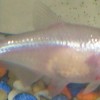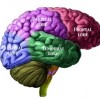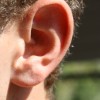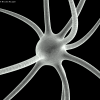Biological Warfare
Sep 15th
Scientists at the Universities of Nottingham and Maastricht have engineered a strain of bacteria that may be able to fight cancer!
Clostridium sporogenes are anaerobic soil dwellers which cannot survive in the presence of oxygen. Researchers have genetically modified these bacteria so that they produce an enzyme that activates a cancer drug. It turns out that the centers of solid cancer tumors contain very little oxygen. Researchers hope to inject cancer patients’ tumors with the engineered Clostridium spores, which would not survive in the rest of the oxygen-rich body. After a tumor is infected with the Clostridium, a patient would also be More >

Made to Order
Sep 12th
Preimplantation genetic diagnosis (PGD) is a technique that allows scientists to screen embryos after fertilization through In Vitro Fertilization (IVF), to prevent the transmission of serious genetic diseases for couples who are at risk. It also can be used to screen the egg and sperm before fertilization occurs. Only unaffected embryos will be transferred to the uterus for implantation.
Image from Nature Reviews Genetics 3, 941-955 (December 2002)
While this technology offers the hope to increase the success of IVF, it does raise some concerns about choosing a child in order to meet the needs and desires of parents. While most cases seem to have More >

Genetic Insight into ADHD
Sep 9th
Attention-Deficit Hyperactive Disorder, more commonly known as ADHD is one of the most common neuropsychiatric disorders and is the most commonly diagnosed behavioral disorder of children. It affects about 7 percent of school-age children in the United States; affecting more boys than girls. This disorder is characterized by inattentiveness, hyperactivity and/or impulsivity that are out of the normal range for child development.
A diagnosis of ADHD is based on the persistence of several conditions for 6 or more months. Inattention is characterized by a child being easily distracted, missing details, forgetting things, and difficulty in focusing, among others. Hyperactivity can be More >

Rhythm of the Night
Sep 8th
Circadian rhythms, or cycles of activity during a 24 hour period, are highly conserved across species. While we have much to learn about these daily patterns of life, scientists have found an organism that may offer new insight.
The timing of this internal clock is related to the amount of exposure to light. How do circadian rhythms work in organisms that are not exposed to light? A Somalian cavefish, Phreatichthys andruzzii, is a blind species that has been living without light for approximately 1.4 to 2.6 million years!
Researchers compared the cave fish to zebrafish during exposures to 12 hour period of More >

Addicted to the Tan
Aug 22nd
Tanning is dangerous. Most people know this, yet why is it continuously something many cannot avoid? It has been known for a long time that UV rays damage DNA and can lead to skin cancer, including melanoma, premature aging and wrinkles. 120,000 new melanoma cases are diagnosed every year. A 2005 study showed that 92% of people knew the sun was dangerous but 62% of them still loved to tan. Over 30 million Americans visit tanning salons, as much as 1 million a day. 70% of them are women between the ages of 16 and 49.
Tanning is dangerous because it More >

The Dozing Brain
Aug 8th
Do you know people who swear that they can live on a few hours of sleep a night and be able to fully function the next day? Perhaps you’re one of these people. Well it seems that you really can’t “fully function” on less sleep.
Researchers at the University of Wisconsin- Madison conducted tests with rats that were kept up past their normal bedtime. The rats were given objects to play with to keep them awake. During play, electrodes were implanted in their brains to measure brain activity. The results were interesting.
It seems that sleep does not involve the whole brain at once. More >

Beauty may be only skin deep, but so are brains.
Jul 18th
In an exciting paper by from a group from Stanford, researcher Andrew Yoo and colleagues have demonstrated that fibroblasts can be transformed into neurons using RNAi to coax these skin cells into becoming functional neurons.
Different cell type (skin cells, neurons, osteoblasts, etc.) start out from less specialized cells, called stem cells. What a cell will become (its characteristics and functions) is also known as the cell’s “fate.” It may seem odd that seemingly simple skin cells can be transformed into cells that make up the thinking brain. However, all cells have a common set of DNA instructions, and it is More >

Are you listening to me?
Jun 20th
Many of us have probably been accused of not paying attention to what someone is saying to us. I’ve also found it odd (since I can’t recall it happening to me) when I’ve approached someone engaged in a task, and they genuinely seemed not to notice I was there.
In a study published in Attention, Perception, & Psychophysics, a group of researchers have been examining a condition called “Inattentional deafness.” The group from University College London examined study participants’ ability to detect a sound while focusing intently on a task.
When subjects did a simple version of the computer based task, most recalled More >

A New Neurotransmitter (D-Aspartic Acid)
May 13th
In 2011, you would think that neuroscience is focused on discovering answers to high-level questions about the brain; how consciousness arises, how emotions work, what is autism, etc. Although progress is being made in all of those areas, it seems that we still have a great deal to learn about even the most basic components of the brain.
Recently, a group from Naples reports that D-Aspartic acid functions as a neurotransmitter in both a mammal the rats (Rattus norvegicus), and a mollusk (Loligo vulgaris). D-Aspartic acid (D-Asp) has been known to scientists for well over a century. However, its role as a More >

